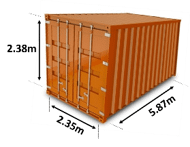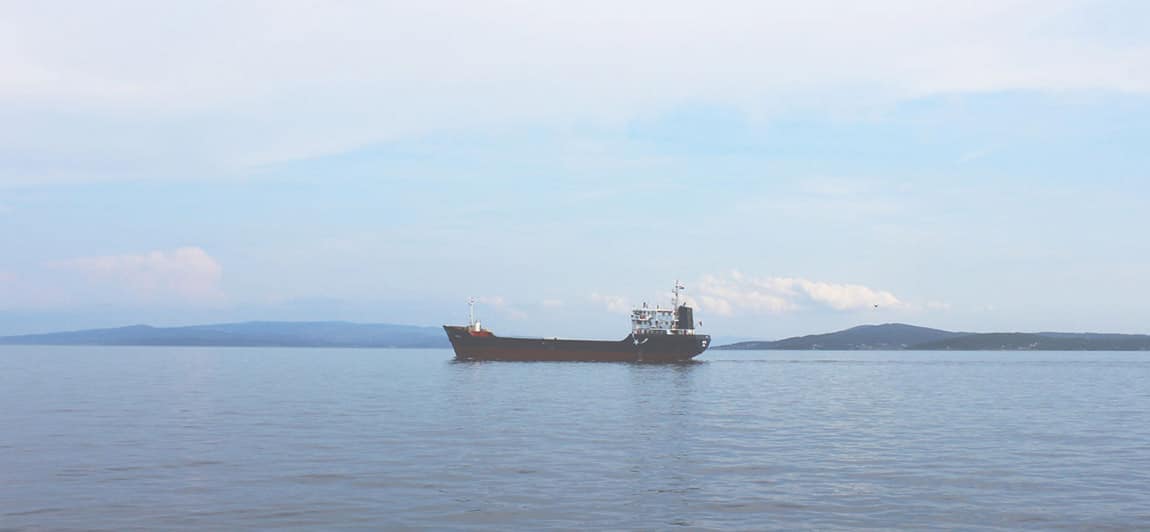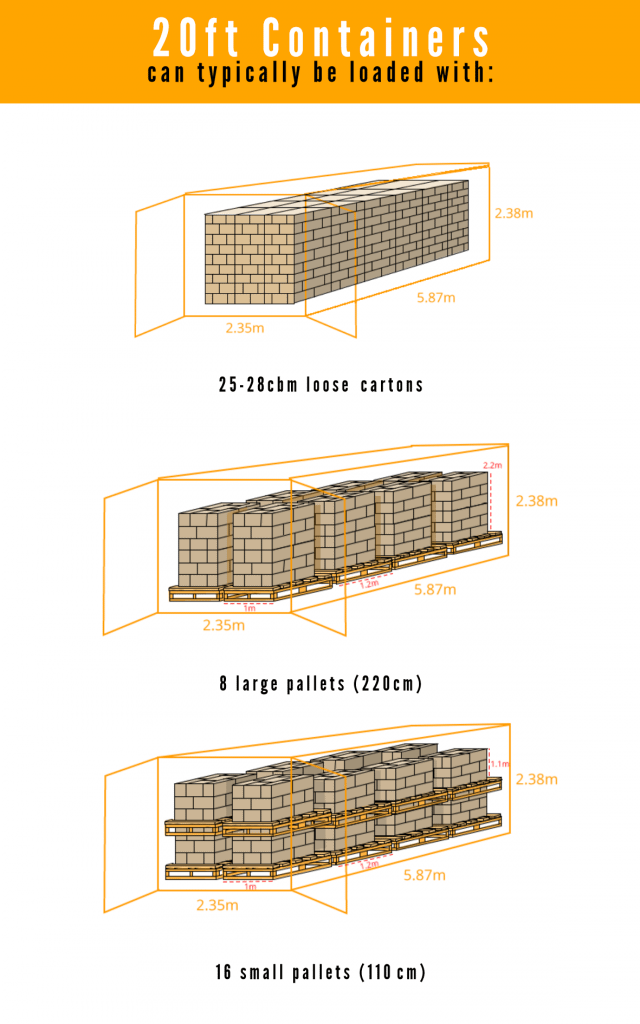Shipping Containers | Sizes and Types
If you’re shipping enough goods to fill a container then you’ll need to arrange an FCL (Full Container Load) shipment.
The most common containers in circulation are currently dry storage, general purpose containers, which come in the standard 20ft, 40ft and 40ft High Cube (often shortened to HC or HQ) sizes. These are used to ship dry goods and are what most importers will use.
It’s generally a good idea to use the container sizes as consideration for the volume of goods that you’re purchasing. If you purchase goods only to find out that they’re a few cubic metres over capacity, you’ll need to pay for a bigger container – and nobody wants that!
If your goods are an odd shape, or are extremely heavy, you should check with your supplier how they generally load their goods and more importantly, what fits into a container. They should have plenty of experience in loading their goods into containers so you should generally be led by them, however, here’s our guide to what you can fit into those big metal boxes:
Shipping Container Sizes - 20ft, 40ft, 40ftHC
How Much Can I Fit In A 20ft Container?
A 20ft container (20ft in length) can generally squeeze about 25-28cbm worth of goods inside. This is massively dependent on the nature of the goods as some commodities won’t be able to stack and some boxes are too large to fit in efficiently. You can often load over 15,000kg without incurring a ‘heavy weight surcharge’.

- Dimensions of a 20ft container : 2.38m x 2.35m x 5.87m
- Fresh air in a 20ft container : 33cbm
- Cartons in a 20ft container : 25-28cbm of cartons (possibly less if very large cartons – more wasted space; possibly more if fairly small cartons – less wasted space)
- Pallets in a 20ft container : 8 pallets (if the pallets are up to 220cm tall, or 16 pallets double stacked pallets of around 110cm tall).
Don’t forget if you have large items there will be a lot of unusable space so you should ask your supplier before assuming you can get 28cbm of goods into a 20ft container.
Shippo; 20ft container, 20ft shipping containers, 20 ft container, 20ft container size, 20ft container cbm, trends
How Much Can I Fit In A 40ft Container?
As you’d expect, a 40ft container has the capacity of around double a 20ft container. A 40ft container (40ft in length) can generally squeeze about 54-58cbm worth of goods inside. Again, this is dependent on the nature of the goods and the size of the cartons. You can often load over 20,000kg without incurring a ‘heavy weight surcharge’.

- Dimensions of a 40ft container : 2.38m x 2.35m x 12m
- Fresh air in a 40ft container : 67cbm
- Cartons in a 40ft container : 54-58cbm of cartons (possibly less if very large cartons – more wasted space; possibly more if fairly small cartons – less wasted space)
- Pallets in a 40ft container : 18 pallets (if the pallets are up to 220cm tall, or 36 pallets double stacked pallets of around 110cm tall).

Don’t forget if you have large items there will be a lot of unusable space so you should ask your supplier before assuming you can get 58cbm of goods into a 40ft container. 40ft HC is taller than the 40ft container so if you need a little extra space – but not enough to warrant another container – then there is another option (See below)
Shippo; 40 ft hc, 40ft shipping containers, GP Container, cbm shipping, 40ft container dimensions, 40ft containers, trends 40ft High Cube Containers
If you’re trying to import as much as is physically possible then the 40ft High Cube container is for you! The only difference in dimensions between a 40ft and a 40ft High Cube is that there is a little added height, which can often allow you an extra row of goods. Although only a 27cm height increase, this adds up to a total extra volume of 9cbm!

- Still 40ft in length but taller at 2.65m in height
- Internal dimensions of 2.65m x 2.35m x 12.0m
- Can hold 76 cbm (cubic metres) of air
- Assume 60-68 cbm of your goods will fill one (if boxed)
A 40ft High Cube (also known as 40ft HC or 40ft HQ) is the king of the containers and is the largest that is currently being used routinely by the shipping lines. Inside a 40ft HC you can fit 60-68cbm of stackable goods. Again, ask your supplier for confirmation about how many of the products that you’re ordering will fit.
Save
Save
Save
Save
Other Types Of Containers
 Now, you’ve established what size container you need…. how about the type? The above mentioned are the standard and it is pretty rare that you should need anything other than a 20, 40 or 40ft HC GP container but if you do, the below are all available. There are various different factors that determine what type of container you will need, these include the size of your shipment, as well as the commodity.
Now, you’ve established what size container you need…. how about the type? The above mentioned are the standard and it is pretty rare that you should need anything other than a 20, 40 or 40ft HC GP container but if you do, the below are all available. There are various different factors that determine what type of container you will need, these include the size of your shipment, as well as the commodity.1. Open Top | The Convertible of Shipping Containers
When shipping heavy, bulky or awkward goods loading by hand or by fork lift may be too difficult (or impossible). As the name suggests, these containers open from the top to simplify loading and unloading. These are used for tall goods and have a removable tarpaulin and bows for a roof. Open tops simplify loading and unloading and allow access for a crab or a crane.
2. Ventilated | The Breathable Container
These containers are aimed at goods that could be damaged by condensation. They come fitted with small ventilation systems in the upper 6 inches of the walls as this is the primary area affected by condensation. The vents are small enough to avoid compromising the space inside the container but large enough to prevent a build-up of moisture.
3. Insulated | The ‘Thermos’ Flask Container
Generally, insulated containers are used by the pharmaceutical, biotech, food processing, perishable foods or speciality foods industries. These are used to keep the goods inside the container at the same temperature as they were when loaded. This is often done with dry ice or bubble wrap depending on the purpose.
4. Reefer | The Floating Fridge Container
Reefer containers are refrigerated and are generally used for foods such as fruits or anything that needs to be at a constant temperature lower than 15 degrees. These are quite costly, and get more expensive the lower the temperature needed. Reefer containers can be set to temperatures as low as -20 degrees Celsius.
5. Flat Racks | More Dance Floor Than Container
This type of shipping container has no side walls (just end walls) and no roof. They come in various types, both fixed end or collapsible end form. These are generally used for over height or oversized cargo. The goods will be rolled or lifted on to the platform before being strapped down for transit.
6. Flexi Tank | An Inflatable Within a Container
Think blowing up a balloon in a shoe box whist the lid’s on! These containers come loaded with a bag like flexible tank inside. These are specifically for the shipping of bulk liquid and can carry between 10,000 – 24,000 litres of non-hazardous liquid depending on the container size. This is a growing shipping method and 700,000 flexi tanks are set to sail in 2015.
7. Dress Hanger | The Floating Wardrobe
These do exactly what you’d expect! These type of containers come with buckles, nylon straps or ropes hanging from poles within. This allows luxury style garments that cannot be folded to be hung during transit. A container of this nature would often be used for Bridal outfits or tuxedos.
Do I need to buy a shipping container?
A lot of people call us to enquire about the cost of shipping containers, “can we buy a container in China, import goods in it and keep it?” – and some even ask us whether we can sell them one. (In case you’re wondering . . . no, no, we can’t.)
Now, unless you’re planning to build a beautiful house using shipping containers, the likelihood is that you don’t actually need a container at all. If you want to buy a container to store your goods then you’ll probably have to do that separately, moving the goods you import into it, as shipping lines don’t sell containers that they’re using. Some people even think that they need to purchase a container to load their goods into for transportation, but they don’t. Repeat:
You do not need to buy a shipping container to import via sea freight.
The shipping lines provide and own shipping containers for all their customers. The container is normally driven to your supplier where the goods are loaded. From there, the container is taken to the port, sup on a vessel and shipped to the port of destination before, whilst still in the container, delivered to your door on the back of a truck. You’ll have 3 hours to unload the goods from the container, either by hand or by fork-lift (if you have access to one) before the lorry driver takes the empty container back to the port for the process to restart. You do not need to purchase a shipping container – and you don’t get to keep the container either. (Yes, we have had people asking if they could keep the gigantic metal box.)
In fact, buying a shipping container would put you out of pocket because you’d have to invest thousands just to buy one (not to mention the cost of transportation and lowering it to the floor) when shipping lines provide it as part of the service.
Now, if you really want to buy a shipping container, you’ll usually have to buy it secondhand and it will typically cost you upwards of £1,000. Many different companies offer shipping containers with a variety of options such as repainting, anti-condensation treatment and sometimes even electrical fittings.
Shippo; standard container size, container size, shipping container dimensions, 40 hq container cbm, 40ft shipping container dimensions, trends Additional FAQ’s asked and answered by Shippo
What is the size of a 20 ft container?
Dimensions 2.38m x 2.35m x 5.87m Total Volume 33 cubic metres (cbm) Estimated Loading Volume 25-28cbm of cartons Pallets in a 20ft container 8 pallets (or 16 if <110cm high and double stacked) What is the size of a 40 ft container?
Dimensions 2.38m x 2.35m x 12m Total Volume 67 cubic metres (cbm) Estimated Loading Volume 54-58cbm of cartons Pallets in a 40ft container 18 pallets (or 36 if <110cm high and double stacked) What is the size of a 40 ft High Cube container?
Dimensions 2.65m x 2.35m x 12m Total Volume 76 cubic metres (cbm) Estimated Loading Volume 60-68cbm of cartons Pallets in a 40ft container including High Cube version. 18 pallets (or 36 if <120cm high and double stacked) What size are standard shipping containers?
The most common sizes ✔️ of general purpose shipping containers used for sea freight are the 20ft, 40ft and 40ft High Cube containers. These vary from 5.9m to 12m in length and 2.4 to 2.7m in height. They have capacities between 33 and 76 cubic metres (cbm).
How much weight can a 20 foot container hold?

The maximum weight that can be loaded into a container depends on the capacity of the cranes at the port of loading and the shipping line owning and shipping the container. A 20ft container can hold up to about 25,000kg and a 40ft container around 28,000kg. Cranes at some ports won’t allow containers heavier than 14,000kg – 18,000kg. Heavyweight surcharges and extra costs for special triaxle trailers required for delivery can be applied over about 18,000kg.
(Click Question below to see our Answer)
How many pallets in a 40ft container?
How many pallets in a 20ft container?
How big is a shipping container?
How tall are shipping containers?
How many boxes fit in a 40 foot container?
How many boxes fit in a 20 foot container?
What are the dimensions of a shipping container?
What size storage container do i need?
We hope this has helped you decide on the container you need to ship your goods, and are happy to provide further advice on what is best for your shipment. Contact us today on 0203 384 0498 or email info@shippo.co.uk.


